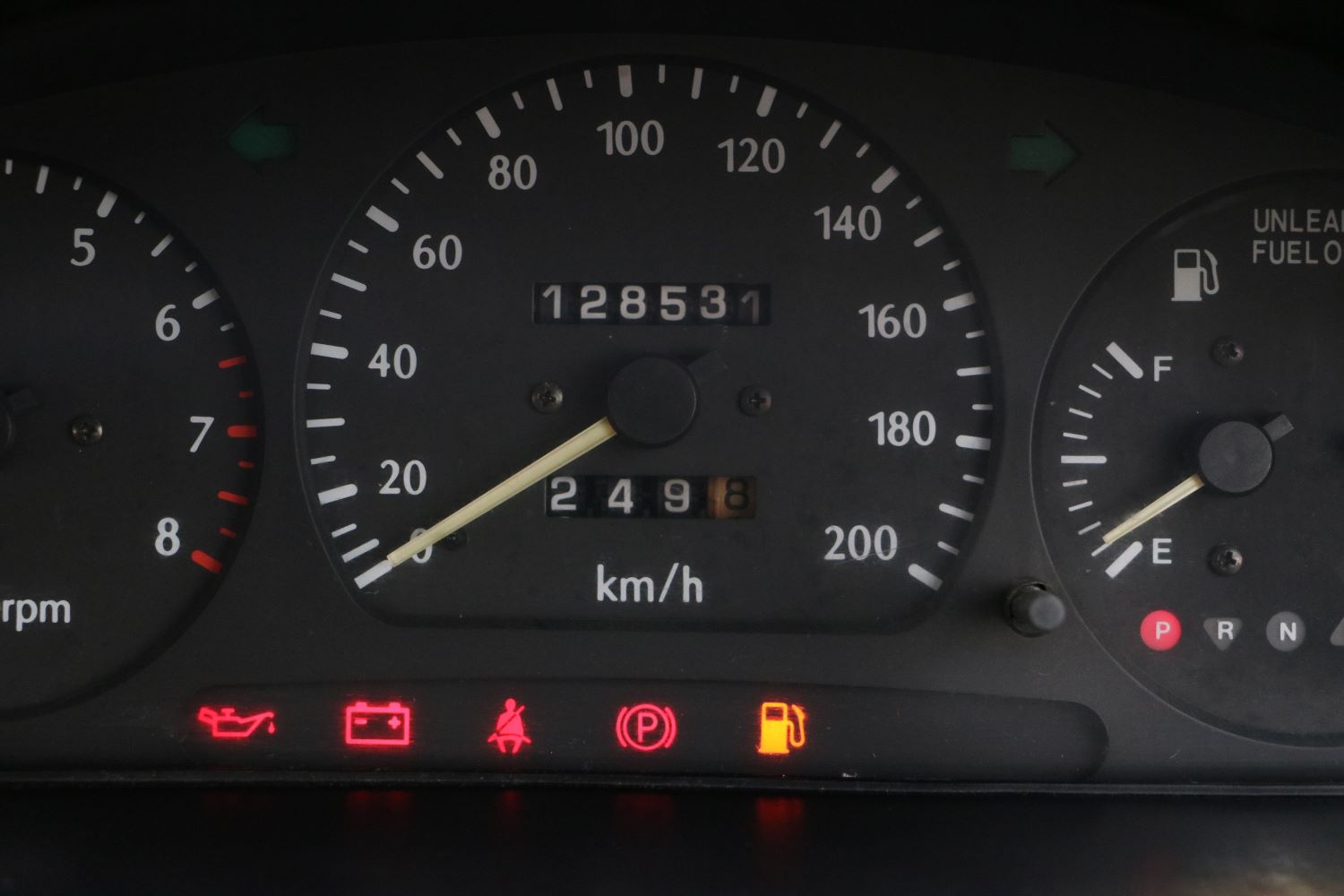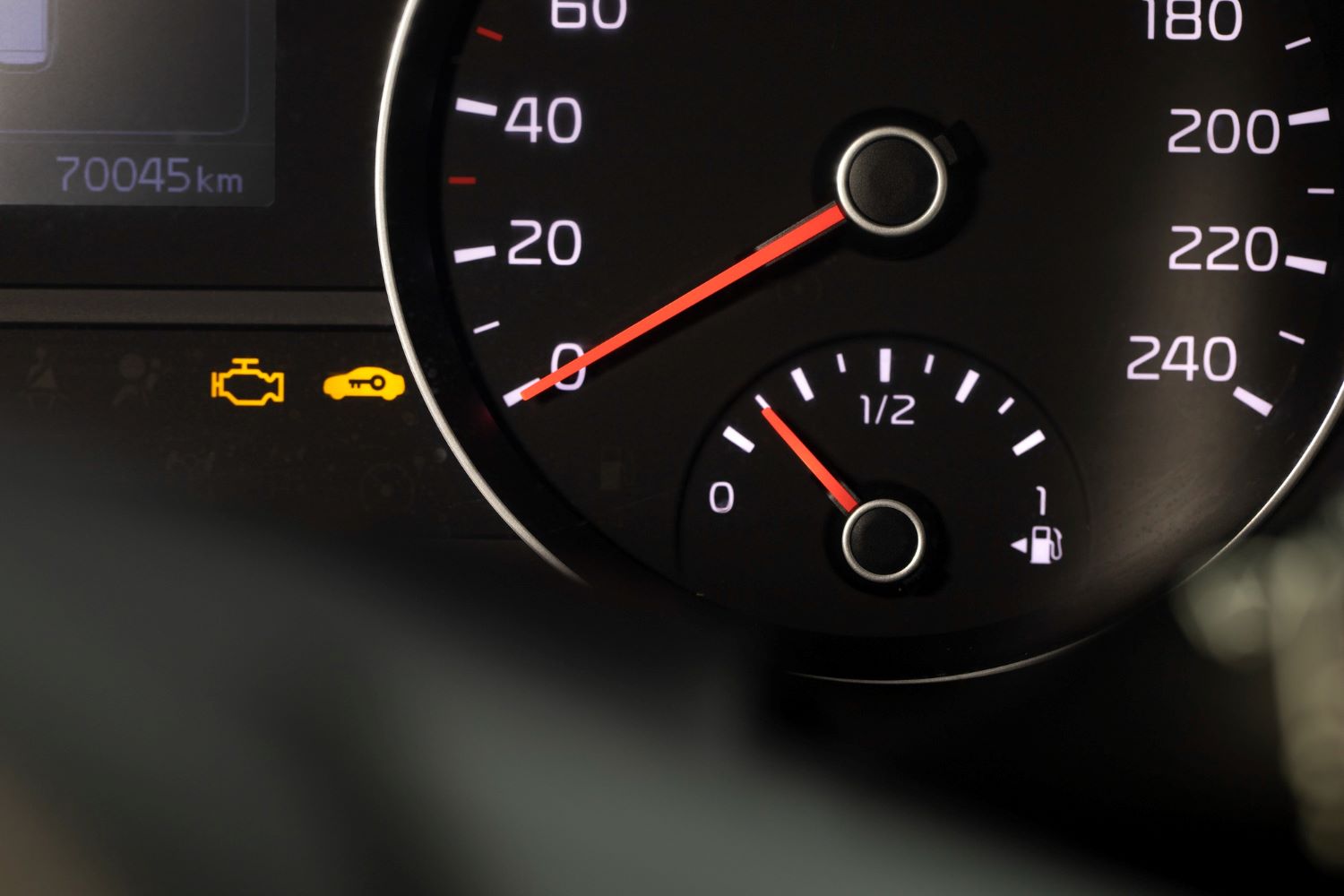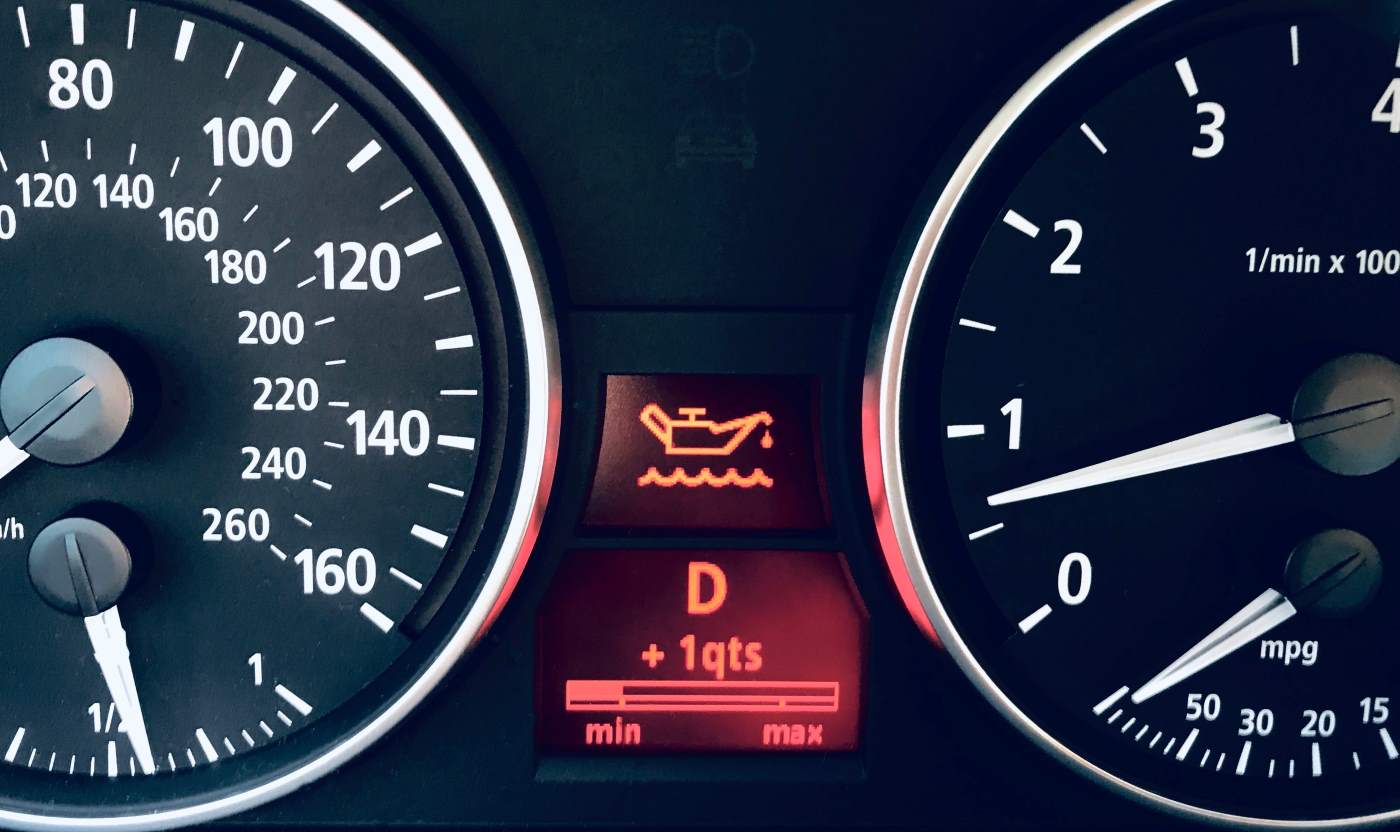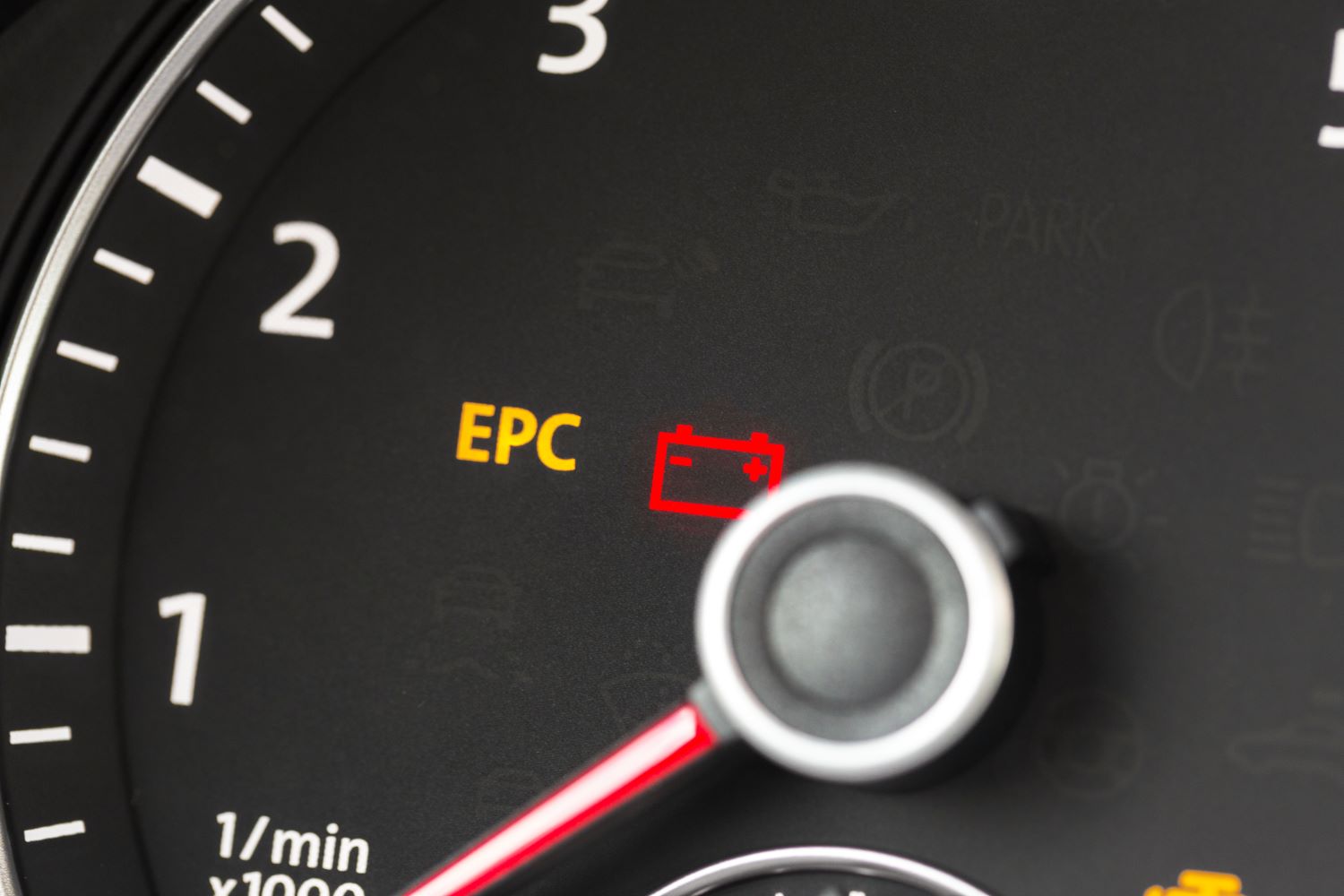9000+ Cashless Garages
96% Claims Settled (FY 24-25)

9000+ Cashless Garages
96% Claims Settled (FY 24-25)



The dashboard of your car communicates with you through various lights. Every light or symbol conveys a piece of information. A simple light may remind you to wear your seatbelt, whereas a serious one may indicate low oil pressure. It keeps you safe and away from significant problems if you understand those symbols.
This means you can run an early checkup, address problems promptly, avoid costly repairs, and keep your car running smoothly with minimal hassle. So, knowing the dashboard lights is very important to maintain your vehicle properly. Let's decode the most common car dashboard warning lights so you know exactly what your car's trying to tell you.


The dashboard warning lights in a car represent symbols or icons that illuminate the dashboard. It is to alert you about potential faults or malfunctions. These warning lights are indispensable in a car's safety and maintenance system. They are designed to provide immediate information on the components in your vehicle, such as the engine.
Knowing the glowing dashboard light and the corresponding action to solve the problem is essential. Some lights indicate minor problems, such as the check engine light, while others indicate serious issues that require immediate attention, like the oil pressure light.
Car dashboard warning lights are essential tools that alert drivers to potential problems with their vehicles. Here is a description of the light and purpose for each:
| Category | Colour | Examples |
| Critical Warning Lights | 🔴Red | Brake failure, engine overheating, temperature warning light, power steering warning light, airbag warning light, and ABS warning light. |
| Cautionary Warning Lights | 🟡Yellow / Amber | Check engine light, tyre pressure low light, traction control light, fuel warning light, service vehicle light, and glow plug light (diesel vehicles). |
| Informational Lights | 🟢Green / Blue | High beams, cruise control, turn signal indicator, indicator fog lights, eco mode indicator, parking light indicator, and automatic headlight indicator. |
This light indicates severe issues that require immediate attention. Ignoring them can compromise safety or cause significant damage. Here are the types of critical warning lights and their meanings:
| Warning Light | Symbol | Possible Cause/Issue |
| Temperature Warning Light | Often displayed as a "thermometer in the liquid format." | High engine temperature, coolant leakage, broken water pump, low coolant. |
| Power Steering Warning Light | Depicted as a "steering wheel with an exclamation mark." | Malfunction in power steering, low fluid levels, and a broken pump. |
| Airbag Warning Light | Shown as a "man with a circle over his head." | An airbag malfunction may prevent the airbags from deploying in an accident. |
| ABS Warning Light | Circular light displaying the word "ABS." | Issues within the anti-lock braking system may cause longer stopping distances. |
These lights indicate non-critical issues that require prompt attention to prevent escalation. It serves as an early warning for minor issues like:
| Warning Light | Symbol | Possible Cause/Issue |
| Traction Control Light | Displays a picture of a "car with wavy skid marks below it." | Indicates the traction control system is activated, typically when the road is slippery. |
| Fuel Warning Light | A light shaped like a "fuel pump." | Warns that fuel is low. If ignored, it can damage the fuel pump or leave you stranded. |
| Service Vehicle Soon Light | Often mistaken for the check engine light but typically has a "wrench or spanner." | Signals that regular maintenance, such as an oil change, is due or the car needs attention. |
| Glow Plug Light (Diesel Vehicles) | A symbol of a "coil or curly wire." | Indicates poor heating of glow plugs, which may make it difficult to start the vehicle in cold temperatures. |
Informational lights on a car dashboard provide updates about systems or features that are active or functioning as intended. Here are some examples:
| Warning Light | Symbol | Possible Cause/Issue |
| High Beam Light | Represented by a "headlamp icon" with lines extending outward. | It activates when high beams are on and reminds you to switch to low beams to avoid dazzling other vehicles. |
| Cruise Control Light | Typically in the shape of a "speedometer" or "car with an arrow." | Indicates cruise control is on, maintaining your set speed while driving. |
| Turn Signal Indicator | "Left and right green arrows" that blink after turn signals are activated. | Signals your intention to make a turn or lane change. |
| Fog Lights Indicator | A "lamp with horizontal lines and a wavy line." | Indicates that the front and rear fog lights are on, helping to conserve battery power by alerting you to their presence. |
| Eco Mode Indicator | A symbol of "a leaf" or the word "ECO." | This indicates when the car uses less fuel, encouraging eco-friendly driving by slightly reducing power. |
| Parking Light Indicator | A green light resembling "two forward-facing semicircles." | Indicates that the parking lights are on, providing visibility in low-light conditions when parking. |
| Automatic Headlight Indicator | Often, a green light with an "A" inside a headlamp. | Indicates that automatic headlights are on, adjusting to lighting conditions automatically. |
Understanding common dashboard warning symbols is crucial for safe and efficient driving. Given below are some common dashboard warning symbols and their meanings:

This light is typically in the shape of a small engine or labelled "Check Engine," indicating a problem with your car's engine or supporting systems. The causes range from loose gas caps to failure in the emission system or even misfires.
It can result in inefficiency or severe damage to your car's engine if not checked, and flashing call for immediate professional attention.

The oil pressure warning light illuminates when oil pressure is dangerously low, potentially causing severe engine damage. It is represented as an "oil can" (complete with a drop of oil). It may result from a faulty pump, leaks, or low oil levels.
Stop driving immediately to check oil levels and top up if necessary. If unresolved, seek professional assistance to prevent costly repairs.

It typically indicates a malfunction in the charging system, which may be caused by a battery or alternator issue. The common causes are loose connections, corrosion, or a failing alternator. If this light comes on while driving, it could cause a complete loss of power.
Check the battery's terminals for corrosion and consult a professional if the problem continues. A well-maintained battery guarantees a reliable charging system.
This symbol alerts you to lower tyre pressure, affecting fuel efficiency, handling, and safety. It may indicate a slow puncture or simply an inflation in the tyre more than the manufacturer's recommended level.
If the light remains on after inflation, it could signify a sensor malfunction. Regular tyre inspections and maintenance minimise such risks and enhance vehicle performance.
Diagnosing and resolving the dashboard warning light helps identify and address problems with your car's components before they worsen. Here are a few points to help you with your diagnosis:
Use your car's manual for information about what the symbol is indicating. It clearly states what it is, including any minor repairs or significant work that may be necessary.
Look for minor issues such as low tyre pressure, insufficient oil levels, or a loose gas cap. Such minor adjustments can often resolve the issue and turn off the light without professional assistance.
Connect your vehicle with an OBD2 scanner through the diagnostic port and read the error codes. With this tool, one can identify particular problems in the engine or other systems and be guided to their solutions.
Brake failure and other car malfunctions require specialised equipment and expertise. Therefore, it is advisable to have this checked by an automotive professional if the bulb is only on or keeps flickering.
When the problem is corrected, the warning light should be reset manually or through a scanner. With this, the system can identify the defect and subsequently correct it.
This proactive maintenance prevents most dashboard warnings and extends the life of your car. Here are a few tips to do that:
This involves frequent oil changes in the engine and topping off fluids such as brake fluid and coolant to prevent overheating or system failure.
Maintaining ideal tyre pressure and the required tread depth ensures excellent fuel efficiency, traction, and safety. Regular inspections prevent blowouts and provide the best grip on the road surface.
At regular intervals, it is recommended to test the battery charge and clean the terminals. This helps prevent unwanted starting issues or electrical malfunctions, ensuring an extended life for the car battery.
Check brake pads, rotors, and lights regularly to ensure safe stops and clear vision, thereby avoiding accidents, law violations, and peace of mind.
Updating software for modern vehicles enhances performance, fixes bugs, and improves safety features, ultimately improving your driving experience.
The dashboard warning lights are the indicators of any issue or warning of the vehicle. Monitoring the dashboard lights can significantly improve car performance and longevity. Read your car's manual or consult the authorities periodically to enhance your driving skills. This enables you to be a responsible driver and saves you money on vehicle repairs.